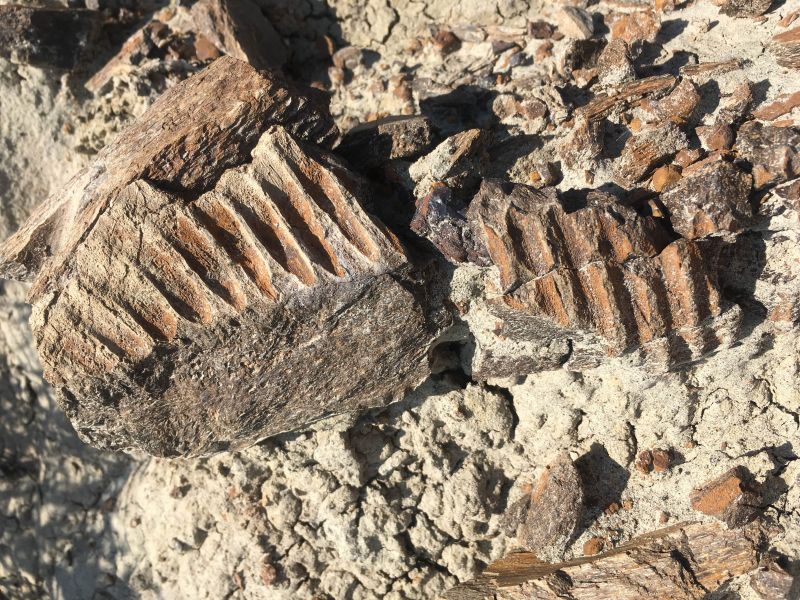While combing through the garbage left by people at the base of the Orkney Viewpoint, one Kneehill County employee found something that was left by history.
On one of the grueling walks at the bottom of the cliff to pile garbage, poking around, Cole Christie discovered the remains of a dinosaur. He carefully mapped out the location and went to one of the biggest names in dinosaurs to figure out what it was. He contacted famous palaeontologist Jack Horner, who was able to identify it through a picture as being the jawbone of a Hadrosaur. He also contacted staff at the Royal Tyrrell Museum who also confirmed the find. Christie learned they are fairly common in the area.
Francois Therrien, Curator of Dinosaur palaeontology at the Tyrrell received an email from Christie.
“I had a look at his photos and it looks like part of a jaw of a duck-billed dinosaur, or Hadrosaur,” said Therrien. “It was badly broken up so it looks like it has been exposed for a while.
He is interested in exploring more.
“It is worth investigating because when you are talking about the skull elements of a dinosaur, you always get excited because maybe there may be more of the skull out there. But based on the shape of the bone, it looks like it has been exposed for a while, but it is definitely a site I want to go have a look and see if the rest of the skull is more intact up in the cliff,” said Therrien.
Therrien explains that a Hadrosaur is very common in this area.
“They were as common as deer are today back in the cretaceous, if you walk in the badlands and stumble on broken bones, nine times out of 10, they would be from a duck billed dinosaur.
While the find may not be of great scientific significance, it can be pretty exciting to find bones, especially in light of so many discoveries found by amateurs.
“Every year we probably get over 100 reports from the public, and most of them turn out to be rocks or bones of no great scientific value, but every once in a while you do find something of significance,” he said.
Some of these include Black Beauty, a T-Rex discovered by fishermen, the Devil’s Coulee egg find, discovered by a young girl or the Leptoceratops, found by a Fort MacLeod man after the 2013 flood.
“There have been many significant discoveries made by members of the public doing routine activities, whether at work or maybe on vacation,” he said. “Even though we would love to, we can’t be everywhere in the province, so that is why we rely on the general public to be our eyes and ears in the field.”
He said Christie did the right thing in contacting the museum.
“If you ever find a dinosaur bone in Alberta, just snap a picture and send it to the Royal Tyrrell Museum and someone will get back to you and we may go and investigate,” he said. “What Cole did was correct, he left the bones where they are, snapped a photo, got the GPS coordinates and reported the find to the museum. This is what we encourage everyone to do if they find dinosaur bones. They could be of significance.”








